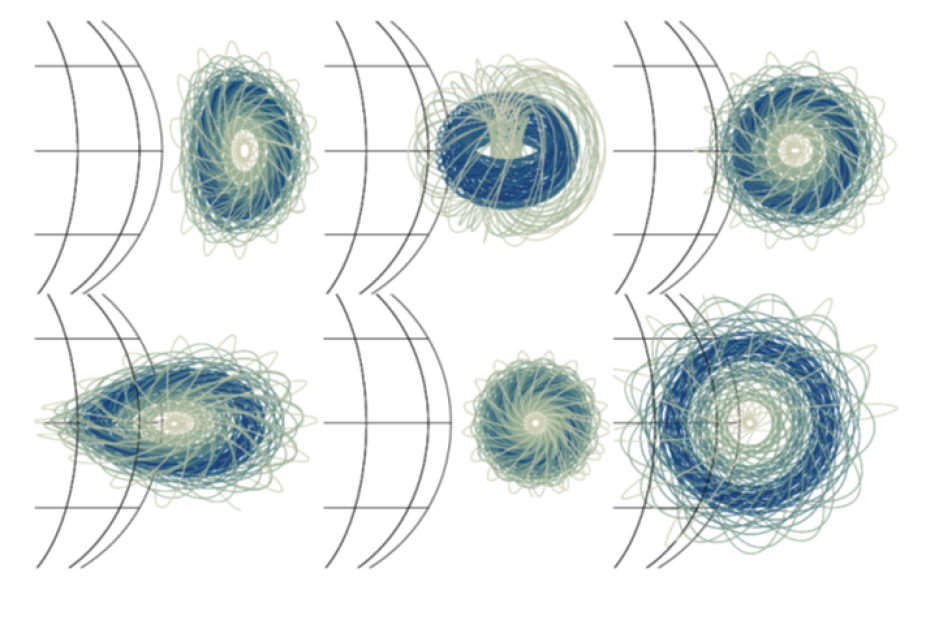Publication Name: Frontiers in Astronomy; Authors names as they are listed in article: Anna Malanushenko, Natasha Flyer, Sarah Gibson
In this paper, regression-based deep convolutional neural networks (CNN), with 12 layers, are developed for predicting the maximal amplitude of the southward component of the near-Earth magnetic field from a passing interplanetary coronal mass ejection (ICME). The input to the CNN is the Gibson and Low (GLOW) flux rope model (Gibson and Low, 1998) that describes the coronal properties of a CME, where its morphology and position is controlled by 5 varying parameters, i.e. input sampling occurs over a 5D parameter space. The ultimate goal is to determine the extent to which coronal spectropolarimetric observations at the Sun encode sufficient information to predict southward magnetic field component at the Earth.

Examples of various initial GLOW configurations. Blue and green lines are magnetic field lines sampling the magnetic structure of the GLOW spheromak, shown here with different combinations of parameters for angular size, topology, orientation. Solar surface is shown in thin black lines for reference.
The GLOW model is used as a first simple test of a self-similarly expanding magnetic flux rope which nevertheless allows consideration of the impact of varying CME location, orientation, size, and morphology. The CNN problem is set up in two experiments: 1) given input data near the Sun, three 2D images in the meridional plane of the components of the magnetic field, predict the maximal southward amplitude of the measured magnetic field at the Earth; 2) given line-of-sight integrated images of the Stokes parameters, corresponding to the physical configurations of the over 30K flux ropes from Part 1, predict the maximal southward amplitude of the measured magnetic field at the Earth.